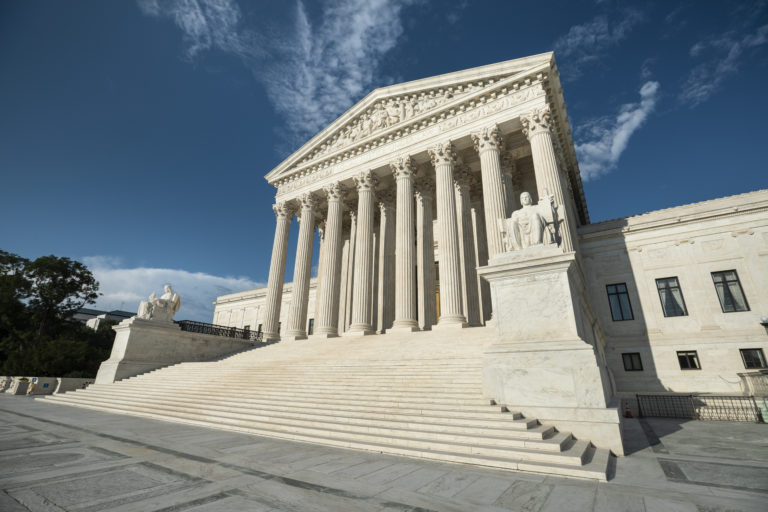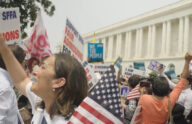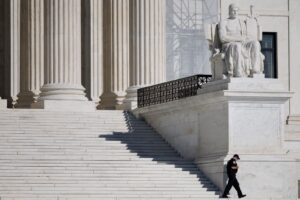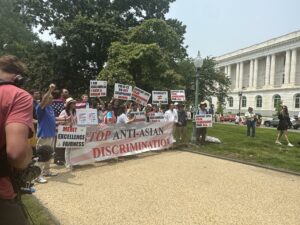Racial balancing in competitive high school admissions is heading back to the Supreme Court. Just months after the Court declined to take up a parent group’s challenge to the admissions overhaul at then-top-ranked Thomas Jefferson High School for Science & Technology (TJ) in Fairfax, Virginia, another set of parents is waging a similar battle to save Boston’s venerable “Exam Schools.” They’ve given the justices good reason to take up the issue this time.
The Exam Schools are a set of three that includes the John D. O’Bryant School of Math and Science, Boston Latin Academy, and Boston Latin School. The latter is the oldest high school in America, with alumni including five signers of the Declaration of Independence. Each institution ranks among the best high schools in America.
Until recently, Boston Public Schools had rigorous criteria for prospective students centered on a standardized test. But as with TJ, the decision-makers in Boston identified a problem with the Exam Schools that had nothing to do with academic performance. The Boston School Committee and BPS administrators targeted the schools’ racial makeup — namely, they said the schools enrolled too many Asian-American and white students.
To solve this supposed problem, the district convened a “working group” that viewed its task as “rectifying historic racial inequities afflicting exam school admissions for generations.” The group came up with the recommendation to drop the exam and institute an admissions quota by Boston zip code. As part of its PowerPoint presentation to the school committee, the working group showed a slide depicting the “projected shift” of Exam School seats away from Asian American and white applicants. School committee members made it clear that this was the point of the exercise.
Then-member Lorna Rivera emphasized “the issue of just really naming it, you know, and really considering race and ethnicity” and increas[ing] those admissions rates, especially for Latinx and black students.” Her fellow member Alexandra Oliver-Davila endorsed the quota as a form of racial balancing, declaring that she “want[ed] to see those schools reflect the District. There’s no excuse, you know, for why they shouldn’t reflect the District, which has a larger Latino population and black African-American population.” Rivera even worried that the quota didn’t go far enough because “white students would continue to benefit from 32 percent of the seats.”
There was also outright racial animus. Then-school committee chair Michael Loconto was caught on a hot mic mocking the names of Asian-American parents who signed up to speak in opposition to the proposed quota, while Rivera and Oliver-Davila laughed about it in text messages. Text messages later published by the Boston Globe showed Rivera and Oliver-Davila complained about being sick of “westie whites,” a reference to white parents from the West Roxbury neighborhood. All three members — nearly a majority of the seven-member School Committee — had to resign in the wake of their behavior.
The Boston Parent Coalition for Academic Excellence — a group of parents, including some whose children would have earned seats if not for the quota — sued to vindicate the students’ rights to equality before the law. And although they’ve lost so far in the lower courts — and the Supreme Court turned away the similar TJ case — they believe Justice Alito has provided a roadmap to convincing the Court to take up the issue now.
Dissenting from the Court’s decision not to review the TJ case, Justice Alito wrote that the lower court opinion sustaining that plan was “based on a patently incorrect and dangerous understanding of what a plaintiff must show to prove intentional race discrimination” and “cries out for correction.” The same is true in Boston, but the facts of the Exam School case make the error stick out like a sore thumb.
Although the U.S. Court of Appeals for the First Circuit recognized that three school committee members expressed racial animus and that the school committee used the quota to remake the racial composition of the Exam Schools, it still ruled against the parents. The First Circuit held that no matter the members’ motivations, the parents could not prevail because the proportion of Asian American and white students admitted to the exam schools still slightly outpaced those groups’ shares of the applicant pool. Under the appeals court’s reasoning, that means the Boston Parent Coalition could not show that the new criteria had a disparate impact on Asian American and white students, and so could not prevail.
As Justice Alito correctly noted, this “is a clearly mistaken understanding of what it means for a law or policy to have a disparate effect on the members of a particular racial or ethnic group.” The Fourteenth Amendment’s Equal Protection Clause prohibits the government from employing outright racial classifications, but it also curtails facially neutral laws enacted with the intent to discriminate against members of a particular group. Disparate impact is often a helpful evidentiary indicator of discriminatory intent. But the First Circuit’s definition of disparate impact would permit the government to openly target members of a particular racial group for a worse outcome, even with racial animus, so long as members were still represented at greater numbers than the general population. And it would render toothless the Supreme Court’s longtime condemnation of racial balancing, as school districts could achieve the same results through racial proxies like the zip-code quota.
When the Court recently invalidated discriminatory admissions policies at Harvard University and the University of North Carolina, it resolved to end racial discrimination in education — “all of it.”
So, while the Court passed on the TJ case, the Boston parents hope the facts of this case will spur it into action to preserve the promise of the Harvard decision. And it might. The record in Boston lays bare the consequences of immunizing racial balancing from a legal challenge so long as it is cloaked in facially race-neutral terms. This case may give the Supreme Court its best chance to address proxy discrimination in admissions, and the Court should take it.











